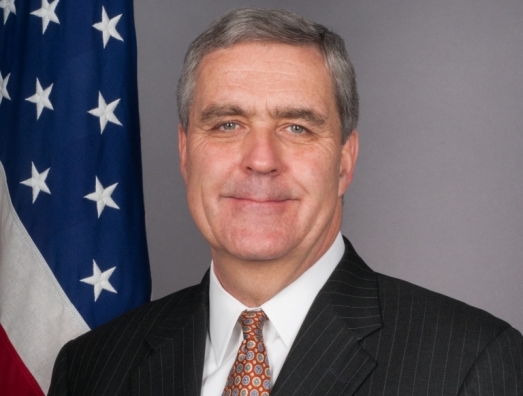 [T]he force posture that NATO has had for the last 20 years or so when it went on operations, extended operations in the Balkans and in Afghanistan, was not best suited for these demands that we now face on our periphery. So the leaders took decisions to change or adapt or revise NATO’s force structure.
[T]he force posture that NATO has had for the last 20 years or so when it went on operations, extended operations in the Balkans and in Afghanistan, was not best suited for these demands that we now face on our periphery. So the leaders took decisions to change or adapt or revise NATO’s force structure.
It’s really a three-part program. First, leaders took the decision to create what we call the Very High Readiness Joint Task Force. This is a brigade-sized ground element which is supported by air, sea and special operations forces that will be on several days’ notice to move. That is several days’ readiness. It will be postured, assembled mostly in the western countries, the western allies of the alliance, but it will be prepared to move anywhere inside alliance space in response to a direct threat.
And while this decision was taken to create this force at Wales, last Thursday defense ministers confirmed that we now have six allies who are prepared to lead this force in the upcoming six years. So defense ministers essentially added definition to the decision that was made at Wales.
The second element of RAP, the Readiness Action Plan, which is important, is that across the six eastern-most allies, of NATO — so again, beginning in the north with Estonia and Bulgaria, all the way down to Bulgaria in the south — NATO decided to establish six, one in each country, six rather small, modest command and control centers. These centers are designed to work with the allies themselves and be essentially the reception centers in the event that the Rapid Deployment Brigade is sent to one of these six allies.
So you have in essence a Rapid Deployment Brigade in the west prepared to go anywhere from Estonia through Bulgaria, or elsewhere in the alliance if required. And then in the east you have these reception cells, these command and control cells, that are prepared to facilitate the arrival of that brigade.
The third element of RAP, and then we’ll get to your questions, has to do with NATO adjusting its command and control structure. These are the headquarters, the combat headquarters, which are designed to command combat forces if required. It’s decided to, we’ve decided to stand up a three star level, that is a corps level headquarters in western Poland and from that headquarters, which we’ll stand up, they will be able to command and control any training, any exercises and any potential operations on the eastern flank of NATO.
So Ready Reaction Force, six reception centers, and a three star headquarters. All of those were commissioned as projects at Wales. And last Thursday all of them were delivered by defense ministers.
Excerpt from Ambassador Douglas Lute’s remarks to the press, February, 13, 2015.
Image: US Ambassador to NATO Douglas E. Lute (photo: Department of State)
